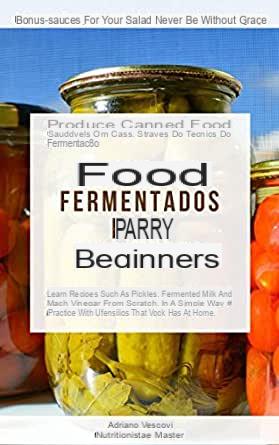
Fermented foods and a sustainable lifestyle
If you love fermented foods, eat products that you know well because they have grown in your home garden and if you believe in downshifting - that is live in a simple way by reducing effort, impact and waste (including using the fridge) - then Shannon Stonger's book Your Great Fermented Food Book is for you.
It is not just a cookbook, in this volume you will find a message in a bottle of hope: the author, in fact, believed that getting out of the millstone of industrial food that can be purchased on every street corner is still possible.
It is possible to stay connected with the food we eat and with the production of what we eat. In the ten years spent on her farm, without electricity, Shannon has refined theart of fermentation and this work is a gift to all those interested in following a similar path, in their own small way.
The importance of visual impact
The book has a well-made graphic design, the natural colors of the pages they are captivating and accompany them well numerous photos.
The technical parts are flanked by appreciable boxes in which you learn, directly fromexperience of the author, all the positives of eating fermented foods.
The schematic nature of the text makes reading - and consequently - learning fluent.
Important, appreciable and not at all obvious the constant reference to the sustainability of fermented products, fundamental concept and increasingly fundamental in modern culture.
Fermented vegetables
The book opens with basic fermentation process, both practical and theoretical, which is concise but clear and well written.
The author provides a review of the different garments in which fermentation is applicable. On vegetables, the teso focuses exhaustively on the differences in the various forms of fermentation, including a section on the necessary equipment, allowing for a safe application.
From theory to practice, Stonger offers a long list of original recipes, practical and tantalizing.
Our favorites? THE coriander sauerkraut and those with fruit, the sweet potato chips with dried chillies and whole fermented tomatoes.
The bread making
Even cereals lend themselves to an interesting reasoning about fermentation: the sourdough with all the secrets of leavening they are described starting from the different methods of bread-making, production and conservation of the sourdough.
Also for cereals it is possible to browse a rich selection of fermented recipes: the Corn bread cooked in a pan, i wheat-free oat cookies, and the 100% integral pan. Truly an ideal guide for lovers of home-made bread.
Fermented dairy products
A large chapter is dedicated to dairy product, a vast world ranging from do-it-yourself cheese production to kefir.
Also in this case it is possible to orient oneself in the different processes of production and a guide to instrumentation for practice.
In this section the recipes are really varied: from milk kefir to smoothies, passing through yogurt, feta, sour cream, fermented butter.
Fermented drinks and sauces
Not just food. The final chapters are dedicated to the numerous fermented drinks with which we can indulge ourselves, above all kvass but also kambucha and various fruit or root serums such as ginger, and ai fermented condiments.
But there is no taste without seasoning: the real culinary gem lies in the numerous sauces interesting to give vent to our imagination.


























